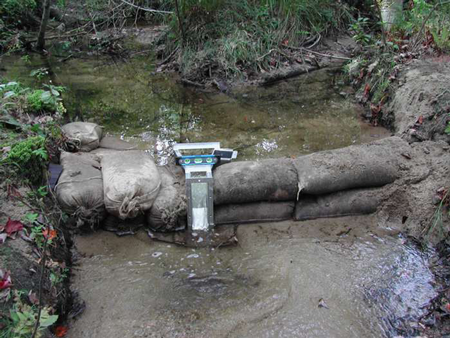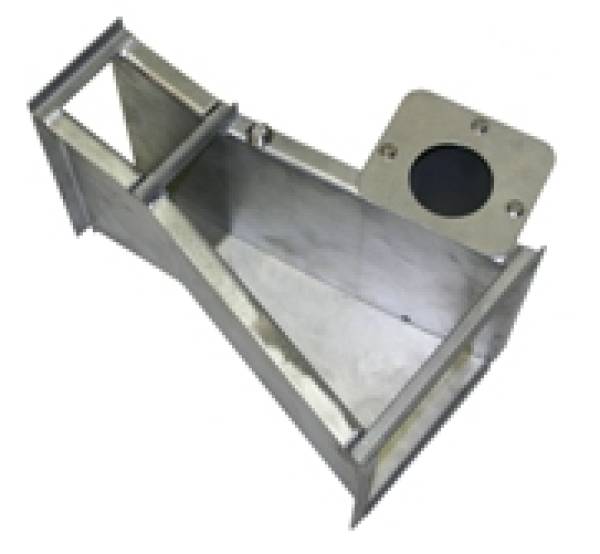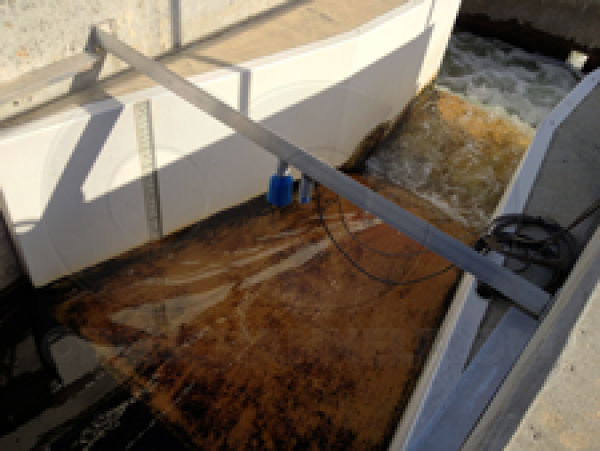This website uses a variety of cookies, which you consent to if you continue to use this site. You can read our Privacy Policy for
details about how these cookies are used, and to grant or withdraw your consent for certain types of cookies.
Can Modified Parshall Flumes Accurately Measure Submergence?
As we have seen before, a Modified Parshall Flume (aka USGS Portable Parshall Flume) is a Parshall flume with the discharge section removed.

Removing only the discharge section still allows for submergence calculations to be performed – unlike the true Montana flume where the lack of an extended throat makes submerged calculations impossible.
The extended throat is critical as it is here in a regular Parshall flume that the secondary point of measurement, Hb, is located. Hb in turn is used to calculate the submergence ratio (Hb/Ha), which in turn is used to calculate the impact that submergence has on the free-flow discharge out of the flume.
The ratio of downstream to upstream head at which the head readings begin to overstate the actual flow rate through the flume is termed the submergence transition, St.
Laboratory research was conducted on a modified 6-inch Parshall flume with the discharge section removed. Traditionally, an unmodified 6-inch Parshall flume has a submergence transition of 0.55. However, for the modified 6-inch Parshall flume the exact values of the submergence transition were difficult to predict and varied by flow rate.
Submergence transitions (St) for the modified 6-inch Parshall flume varied from 0.42 to 0.57. St initially was lower for the modified 6-inch Parshall (0.48 vs. 0.55 @ 0.25 CFS), then rose above it (0.57 @ 0.51 CFS), before dipping (0.42 @ 1.25) and then settling at a lower overall value (0.45-0.47 @ 2.25-3.00 CFS). On average, the submergence transition was 0.506 for the modified 6-inch Parshall flume.
Additionally, the flow would surge forward and backward in a cyclic manner at the secondary point of measurement (Hb). This unsteady condition as the submergence transition was approached had previously been noted by Skogerboe, Hyatt, England, and Johnson in their paper Design and Calibration of Submerged Open Channel Flow Measurement Structures. Part 2: Parshall Flumes.
Ultimately, while the standard Parshall flume discharge table can be used for Modified Parshall flumes, instability in the flows through the flume and changing submergence transition values makes the use of Modified Parshall flumes for accurate flow measurement in submerged applications doubtful. Where the possibility of submergence is suspected, the standard Parshall flume should be used.
Image: Maine Geological Survey
Sources: Willeitner, R., Effects of Submergence of Montana Flumes, Utah State University, May, 1, 2010, Skogerboe, G., Hyatt, M., England, J, Johnson, J, Design and Calibration of Submerged Open Channel Flow Measurement, Report WG31-3, Utah Water Research Laboratory, Utah State University, March 1967
Related Blog Posts
Explore more insights in our blog.

LOCATIONS IN ATLANTA, GA & BOISE, ID




